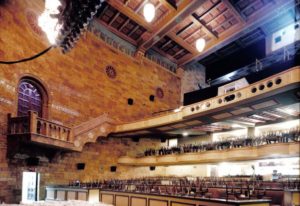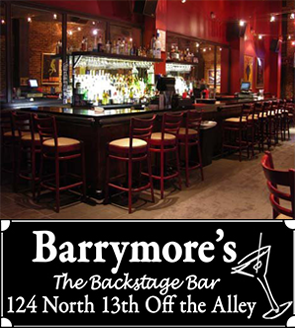On Monday, June 10, 1929, the Stuart Theatre opened its doors to the public for the first time. The first show to be performed on the historic stage was “The Rainbow Man.”
The original structure occupied six floors in the 13-story building. Seating capacity was 1,850. The theater’s architecture boasted influences resembling that of Italian Romanesque, with a slight Moorish influence. Strains of other architectural types were also evident in the beamed and panel designed ceiling, two balconies and six chandeliers. The interior walls, consisting of stone and terra cotta, were rich in history and designed like that of an Old Italian Palace.
In 1971, the Dubinsky Brothers purchased the theater. Despite community efforts to “Save the Stuart,” it was transformed into a modern movie theater. A false ceiling was created, which covered  the ornate design, magnificent chandeliers and the top balcony. The orchestra pit was covered, the marble walls and floors carpeted and the stage was bricked off.
the ornate design, magnificent chandeliers and the top balcony. The orchestra pit was covered, the marble walls and floors carpeted and the stage was bricked off.
In 1977, the University of Nebraska Foundation was bestowed the first five floors of the Stuart Building, including the theater, but eventually decided that renovation of the theater was neither realistic nor affordable.
In March 1986, floors two through ten of the Stuart Building were transformed into condominiums.
In July of 2000, The Stuart Theatre once again changed hands and was purchased by Doug Deeter, as majority owner. His goal was to create a state-of-the-art entertainment facility, without compromising the original, grandiose design of the theater. To achieve this, the false ceiling was torn down, the carpet was ripped from the walls and floors, the marble was restored and the chandeliers were lowered to their original height.
In June of 2001, the Stuart Theatre’s new identity was unveiled. With the new name, Rococo Theatre, comes a new look – the theater seats have been replaced with Vegas-style booths and tables. When not hosting live musical acts, the Rococo Theatre showcases classic and cult-classic movies and sporting events on their state-of-the-art equipment.

